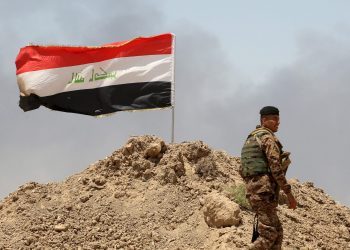Forecast International,
NEWTOWN, CT: The new Status of Forces Agreement (SOFA) between the U.S. and Iraq provides Washington with the date that its last soldier must step off Iraqi soil – Dec. 13, 2011. It was not that long ago that the Bush administration refused to attach a timeline to operations in Iraq, setting off heated debate in Washington.
Even with this new agreement, however, the duration of operations in Iraq is certainly not set in stone. The amendable agreement could be changed to extend the deadline should security conditions on the ground degrade, though the chances of that occurring are slim at this point.
It is also possible that U.S. forces could leave the country well before the 2012 deadline. A national referendum on the agreement could lead to its early termination in mid-2010, a date that conforms to campaign promises from President-elect Barack Obama to withdraw all U.S. troops from Iraq within 16 months of his inauguration. The agreement also allows Washington to remove its troops at any point before the deadline, just as Iraq can eject U.S. forces at its discretion.
Leaving Iraq will be an arduous and expensive undertaking, however. The casual observer may picture merely loading the Pentagon's 150,000 troops onto cargo aircraft over the course of a few weeks or even months and making a swift departure. The reality is much more complicated, and amounts to what one could consider a logistics nightmare.
A recent report from the Government Accountability Office outlines some of the many challenges that the Department of Defense will face in removing its assets from Iraq over the coming years. The report offers a better understanding of a real-world timetable for the redeployment of U.S. forces from Iraq, which the DoD refers to as “reposturing.” Given the scale of realigning U.S. personnel, bases, and resources, defense commands began drafting plans for reposturing in the fall of 2007, long before the SOFA was signed. The DoD began coordinating these individual planning efforts in May 2008.
While the media, and therefore public awareness, tends to focus on the number of combat brigades in Iraq, the GAO notes that as of May 2008, there were the equivalent of 47 brigades' worth of materiel and equipment in over 300 military installations of varying size. These facilities have matured over the past five years, many of them essentially becoming full-scale military cities. Then, of course, one must consider the 150,000 U.S. soldiers and just as many DoD contractors. To put things into perspective, the reposturing efforts following Operation Desert Storm in 1991, a conflict that pales in scope and duration to Operation Iraqi Freedom, lasted at least 14 months.
According to DoD officials, about 80 percent of equipment used by U.S. troops in Iraq is theater-provided equipment, which is equipment that remains in Iraq when units rotate in and out, such as HMMWVs and MRAP vehicles. While most of this equipment has stayed in Iraq thus far, much of it will return stateside as U.S. forces leave the country. According to the GAO, approximately 173,000 pieces of theater-provided equipment worth nearly $17 billion will be sent back to the U.S. (as of March 2008).
The influx of MRAP vehicles over the past year has expanded that list of equipment, though the Pentagon may very well decide to leave a number of those vehicles in Iraq upon leaving. Either way, the GAO notes that “the retrograde process for returning these equipment items to the United States will be a massive and expensive effort.” Complicating the matter further is the need for the Pentagon to account for and handle all government-owned equipment managed and used by DoD-sponsored contractors.
Closing down the many bases that have been established and built up since 2003 and handing over installations to the Iraqi government will be equally time-consuming and costly. The past has shown that closing down the smallest platoon- or company-size installations, containing between 16 and 200 combat soldiers or marines, may take between one and two months. Multi-National Corps-Iraq (the tactical unit responsible for command and control of operations in Iraq) has not had the experience of shutting down much larger and more complex installations, however. Balad Air Base alone has matured significantly over the last five years, and is home to some 24,000 personnel. U.S. Army Central (ARCENT), the Army component of U.S. Central Command (CENTCOM), has estimated that it could take more than 18 months to close a base as large as Balad, equating the process to dismantling and moving a small U.S. city.
The vast majority of U.S. materiel and equipment for operations in Iraq have gone through Kuwait's three seaports and two airports. The fact that some of these U.S. installations are more than 500 miles away only poses additional logistics challenges. Redeployment out of Iraq could also be slowed down due to restrictions or limitations at any of these ports or transit points in other neighboring countries.
The GAO report outlines a number of key DoD assumptions when it comes to military reposturing in Iraq. The first is that any reposturing initiative will be based on Multi-National Force-Iraq (MNF-I) and DoD assessments of conditions on the ground. Secondly, the DoD will be given time to refine its plans for reposturing once an order has been given. Also, the reposturing of U.S. forces will be “deliberate and gradual,” with units requiring 180 days' notice to begin preparations before leaving Iraq. Lastly, the DoD will be capable of sustaining a flow of no more than 2.5 brigades' worth of equipment and materiel out of Iraq each month.
Chairman of the Joint Chiefs of Staff Adm. Michael Mullen highlighted the difficulties in shifting the immense U.S. force from Iraq. Reposturing U.S. forces in Iraq within the timetable outlined in the SOFA would be “doable, but it's not the kind of thing that could do overnight,” Mullen said at a Pentagon briefing in November. “To remove the entire force would be two to three years, as opposed to something we could do in a very short period of time,” he added. Adm. Mullen said that the feasibility of redeploying U.S. forces on a shorter timescale, like President-elect Obama's 16-month plan, would be tied largely to security conditions on the ground and the DoD's ability to remove its troops and equipment safely.
Obama has said that he will seek council from Adm. Mullen and the Joint Chiefs before making any decisions on Iraq, and is likely to take the advice of military commanders to heart. Although the president-elect touted a 16-month withdrawal plan throughout his campaign, it would by no means be a stretch for him to stand behind the SOFA, barring a substantial shift in security conditions. With some exceptions, the level of violence has decreased throughout Iraq. Also, the focus of the American public has shifted strongly to the weak economy, taking many critical eyes away from the situation in Iraq.
What Obama's stance does reveal is that any potential amendments to the SOFA will not extend the target date for U.S. forces to leave Iraq. The DoD's reposture planning efforts will therefore continue to ramp up over the coming months, and barring termination through referendum, will result in a gradual reduction in military personnel and equipment over the course of the new security agreement.









